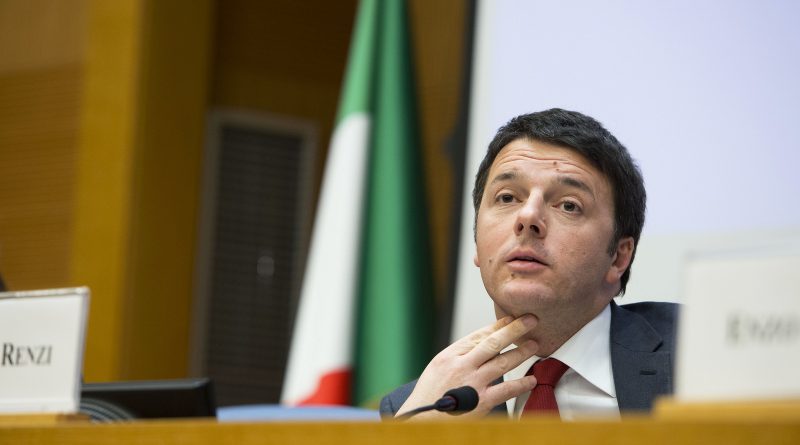Italian Constitutional Referendum: Modernising the State or a Path to Oligarchy?
1. What the referendum is about
On December 4 a referendum regarding the approval of a constitutional reform – that the Italian Prime Minister Matteo Renzi strongly wanted – will take place in Italy. The Italian Parliament approved this reform package on April 12, 2016, after a two-year long debate, inside and outside the Assembly, and after several votes and changes to the original text. As this reform involves amendments to the Constitution, a referendum has been announced, since popular approval is needed for this reform to become effective.
This reform deeply modifies the Italian institutional architecture. Hitherto, the two Chambers of the Italian Parliament have the same role in law-making procedures and must both grant their confidence to the government in order for it to stay in charge. This determines a situation called ‘symmetric bicameralism’ that has few parallels in the rest of the world.
The first and most important part of this reform involves the functions assigned to the Chamber of Deputies and to the Senate: on the one hand, the Chamber of Deputies keeps its functions as until now; on the other hand, the Senate of the Republic would be representing the territorial institutions, i.e. the regional councils and cities. Senators would be indirectly elected among regional representatives and mayors.
The constitutional reform would assign to the Senate the power to intervene directly only on subjects related to the country’s territorial subdivision, the ratification of EU treaties, popular consultations, and a few other less important subjects. Furthermore, the reform would abolish the provinces – an administrative layer between regions and cities – and would centralize some political duties once assigned to the territorial administration.
2. Debate in Italy
Since its first introduction to the Senate in April 2014, the constitutional reform package triggered a harsh debate in the public opinion. The constitutional proposal has revealed to be extremely divisive, not only within the current Italian constitutional arch, but also within the single parties.
Both the front in favour of the reform and the front against it are composite. The former is mainly composed of the party of the Italian Prime Minister, the so-called Democratic Party (centre-left), but encompasses liberal-conservatives formations – most of them supporting Renzi’s government – and several minor parties. The latter is composed by political forces that range from the Movimento Cinque Stelle (Five-Stars Movement, an anti-establishment political formation), to Forza Italia (the former Prime Minister Silvio Berlusconi’s party), Sinistra italiana (Italian left, a social democratic party), and the Communist Refoundation Party. Moreover, Matteo Renzi’s Democratic Party is divided too: while most of the party views this reform favourably, its left fraction has created a Committee for the No, lead by former Prime Minister Massimo D’Alema.
The debate about the reform went far beyond the political class. In April 2016 a group of 56 high-profile law scholars published a manifesto against the proposed reform, followed the next month by an appeal in favour of the constitutional bill, signed by 184 law scholars and professors.
The reasons in favour of the reform that the latter appeal puts forward can be summarized as follows:
- The end of the symmetric bicameralism and the creation of a Senate strongly bound to the territorial administration;
- The centralization of some duties once belonging to the regional councils and the better definition of the duties in the hands of those councils;
- The possibility for increased intervention on behalf of citizens to intervene more actively in the law-making procedures through new kinds of popular consultations;
- And, finally, the simplification of the institutional architecture.
The reasons against the constitutional bill endorsed by the former group of scholars are as follows:
- This reform did not receive a general, shared political support, but has been determined by an inconstant parliamentary majority;
- The new Senate would not be a true territorial Chamber, as the senators would be indirectly elected within the regional councils, so they would be a manifestation of the parties’ political will and not of the citizens’;
- The centralization in the hands of the government of some duties once belonging to the regions deprives the latter of a part of their autonomy;
- Finally, the promised new forms of popular consultations will be treated in another constitutional bill postponed in the future.
One of the scholars against the reform, Gustavo Zagrebelsky, asserted, in a public debate with Matteo Renzi, that this reform would turn Italy from a democracy to an oligarchy.
3. Foreign press
The debate on the referendum has also flourished outside Italy. Tony Barber wrote in the Financial Times that this reform is a constitutional bridge to nowhere; Le Monde, Der Spiegel, and the Frankfurter Allgemeine Zeitung underline that if the reform will not be approved in the referendum, Renzi will resign from the role of Prime Minister, opening a political crisis that could have repercussions in the whole Europe.
Matteo Renzi, Photo by Palazzo Chigi / CC BY-NC-SA 2.0
![]() This work is licensed under a Creative Commons Attribution-NonCommercial-ShareAlike 4.0 International License.
This work is licensed under a Creative Commons Attribution-NonCommercial-ShareAlike 4.0 International License.




